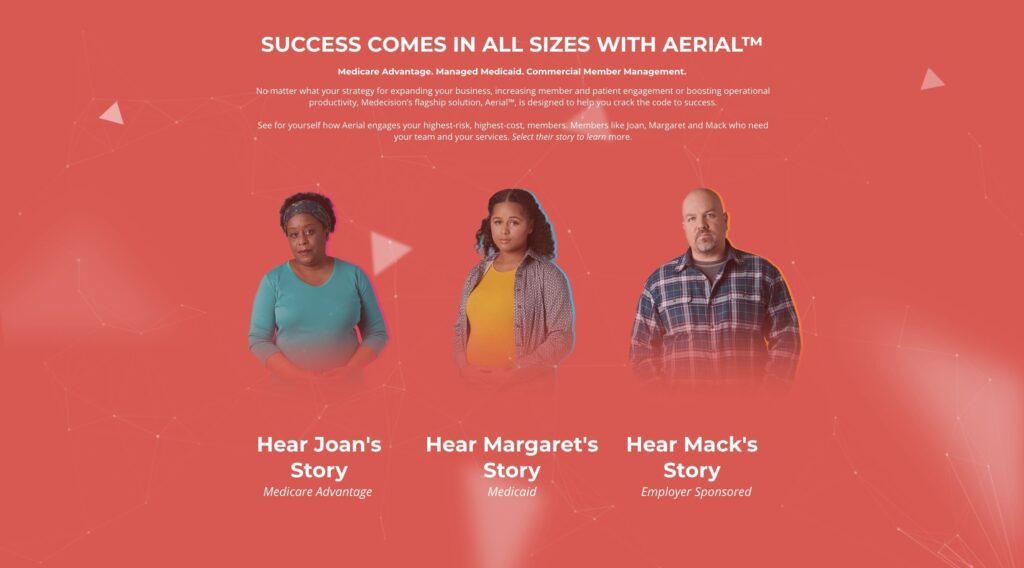
When patients don’t follow doctors’ orders, the consequences are dire. Health plans can help by understanding the specific challenges that members are facing – and then intervening to enable them to overcome medication adherence barriers.
Non-adherence to prescribed medication regimens results in:
– 125,000 pre-mature deaths per year1
– 10% of all hospitalizations
– 23% of nursing home admissions2
– $100 to $300 billion worth of what otherwise would have been unnecessary care3
– $637 billion in costs to the pharmaceutical industry globally4
Unfortunately, half of the more than 4 billion prescriptions dispensed each year are not taken as prescribed. In fact, only about one-third of the 145 million Americans who suffer from chronic diseases successfully stick to their medication regimens.
These patients fall out of compliance when they fail to fill or refill a prescription; miss a dose; take a lower or higher dose than prescribed; stop a prescription early; take an old medication for a new problem without consulting a doctor; take someone else’s medication; or forget whether they had taken a medication.5
Health plans can help by understanding the specific challenges that members are facing – and then intervening to enable them to overcome medication adherence barriers.
Members, especially those who are chronically ill or elderly, can struggle with all kinds of challenges that could make them non adherent, from vision to cognition to financial hurdles. Health plans can now partner with their members and help them overcome these barriers.
To do so, health insurers need to promptly access data and share that information with members of the clinical care team. As such, health plan care team members can then interact with members and help them address the specific barriers that are preventing them from taking medications as instructed.
All the right data
Medecision’s Aerial™ solution brings together the relevant information needed to take action. The system integrates pharmacy claims, medical claims, electronic medical record (EMR), admissions-discharge-and-transfer (ADT) and social determinants of health information in one place. It then runs algorithms to identify those members who are either not complying with medication management regimens or who are at high risk of non-compliance, making it possible for the care management team to quickly take meaningful action.
Consider the following example: Claims data for an asthmatic patient indicates that he is receiving his prescriptions and refills on schedule. However, information from ADT and EMR systems show that the member is frequently finding himself in the emergency room due to severe asthmatic events. When this information is shared with the health plan care management team, the pharmacist contacts the member to intervene. The member tells the pharmacist that “every morning when I go to work, I’m in the car in rush hour. And I take my inhaler out, and I spray it over my head, and I inhale.”
With this additional information, the pharmacist engages the member in a short session focusing on explaining exactly how to use the inhaler correctly. In addition, the pharmacist shares an educational video that clearly demonstrates how to use the inhaler.
Failing to use inhalers correctly is a common problem for members suffering from asthma or COPD. They often are not clear on exactly how to take their medications. So, health plans can intervene by offering the education that not only explains what to take and when to take it but how to take the medications as well. Such education often makes the difference between adherence and non-adherence.
Members are particularly vulnerable to falling out of synch with their medication regimens during care transitions. For example, 24% of patients who suffer a heart attack do not fill their medications within seven days of discharge, and 34% of heart attack patients with multiple prescriptions stop taking at least one of them within one month of discharge.6
With data that paints a 360-degree view of members’ health status, however, health plans can help members stay on track during these difficult transition periods.
The top three problems related to transition of care are associated with anticoagulants, diabetes agents and opioids. With access to data, though, health plan care managers can help members successfully navigate care transitions. For example, care managers can look at the data and understand the length of a member’s opioid prescription. They can then reach out to that member and talk to them about alternatives to pain medication if they need it.
In addition to helping with medication adherence, access to comprehensive data can help health plans successfully support utilization management. An analysis of clinical outcomes, for instance, can support step therapy programs, which are designed to ensure that members try less expensive drug therapy options before “stepping up” to more expensive alternatives. What’s more, access to comprehensive medical and pharmaceutical information can enable health plans to streamline regulatory compliance efforts, thereby improving operational efficiency. In the final analysis, with data readily available, health insurers can improve medication management efforts and help members experience the improved outcomes associated with following doctors’ orders.
References
1 NCBI. Medication Adherence: A Call for Action. https://www.ncbi.nlm.nih.gov/pmc/articles/PMC3947508/
2Peterson AM, Takiya L, Finley R, Meta-analysis of trials of interventions to improve medication adherence. Am J Health Syst Pharm 2003 6 657-65
3 Iuga, A. and McGuire, M. Adherence and healthcare costs.3 Risk Manag Healthc Policy, Feb. 20, 2014. Accessed at: https://www.ncbi.nlm.nih.gov/pmc/articles/PMC3934668/
4 Press Release. Pharmaceutical Companies Lose $637 Billion in Revenue Annually Due to Medication Nonadherence. https://www.pillsy.com/articles/medication-adherence-stats
5 National Community Pharmacists Association. Medication Adherence in America: A National Report. https://www.ncpanet.org/pdf/reportcard/AdherenceReportCard_Abridged.pdf
6 Jackevicius CA, LI P, Tu JV. Prevalence, predictors, and outcomes of primary nonadherence after acute myocardial infarction. Circulation. 2008; 117: 10281036. 4 Ho PM, Spertus JA, Masoudi FA, Reid KJ, Peterson ED, Magid DJ, Krumholz HM, Rumsfeld JS. Impact of medication therapy discontinuation on mortality after myocardial infarction. Arch Intern Med. 2006; 166: 1842-1847



About The Author: Medecision
Fully delivering on the promise of data — and making the business of healthcare simpler and more successful — Medecision offers a whole new world of possibilities. The company's flagship offering, Aerial™, stands as the market's most extensible clinical data platform. It offers complete contextual awareness of members and automates next best actions — simple campaigns, complex care management, utilization approvals, and more — for optimal health outcomes.
Aerial is not only quick to deploy, it is easy to manage. The platform's effectiveness in reducing both medical and administrative costs, coupled with its role in improving the member and patient experience, has made it the preferred choice for health plans and care delivery organizations. Presently, Aerial is instrumental in catering to over 10% of the U.S. population, marking a significant milestone in advancing healthcare efficiency and effectiveness.
More posts by Medecision